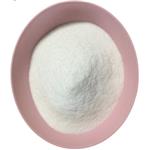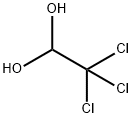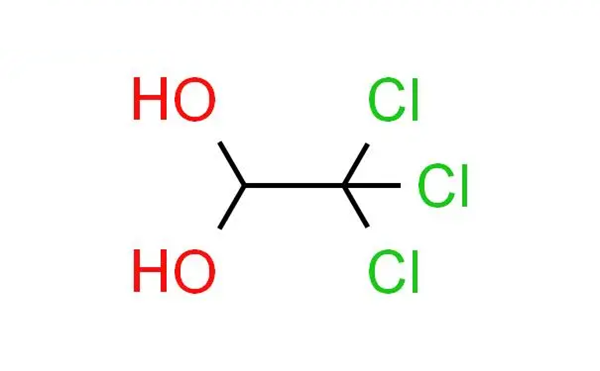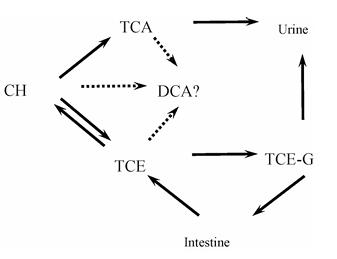Chloral hydrate: toxicities and applications
General Description
Chloral hydrate is a geminal diol with the formula C2H3Cl3O2. It is a colorless solid and derived from chloral (trichloroacetaldehyde) by the addition of one equivalent of water. 1 It is a useful laboratory chemical reagent and was use as a sedative and hypnotic pharmaceutical drug. It is also Chloral hydrate has a fairly unique toxicity profile as compared to other sedative-hypnotics. Manifestations of toxicity include gastrointestinal toxicity and genotoxicity. Chloral hydrate is an irritant to the gastrointestinal tract. Ingestion of chloral hydrate may cause nausea, vomiting, and diarrhea. 2

Figure 1. Properties of chloral hydrate
Toxicokinetic
Absorption
Studies in humans have shown that chloral hydrate is rapidly absorbed after oral administration, with peak concentrations in blood occurring within 1 hour after dosing. 3
Distribution
In humans, orally administered chloral hydrate enters the liver where it undergoes extensive metabolism. Only a limited amount enters the systemic circulation. Chloral hydrate in the blood is rapidly eliminated by metabolism, and a half-life of less than 1 hour. 3
Metabolism
Multiple studies in humans have reported that the metabolites of chloral hydrate include trichloroethanol, its glucuronide, and trichloroacetic acid. The terminal half-lives of trichloroethanol and trichloroacetic acid after oral exposure to chloral hydrate have been measured to be about 8-13 hours for trichloroethanol and 4-5 days for trichloroacetic acid. Trichloroethanol-glucuronide is excreted with bile into the intestine, where trichloroethanol is regenerated and reabsorbed in the gut. 3
Excretion
The primary known excretion route for chloral hydrate in humans is as the metabolites trichloroethanol-glucuronide and trichloroacetic acid in urine. 3
Chloral hydrate is an irritant to the gastrointestinal tract. Ingestion of chloral hydrate may cause nausea, vomiting, and diarrhea.
Gastric Perforation and Esophageal Stricture
Gastric perforation and esophageal stricture have been reported in cases of chloral hydrate overdose.
Erosive Gastritis and GI Bleeding
Gastrointestinal complications are common, including erosive gastritis and GI bleeding.
The single-cell gel electrophoresis assay in HepG2 cells was use to assess the DNA-damaging potential of chloral hydrate. A statistically significant increase (P < 0.01) in DNA damage was reported after treatment with chloral hydrate at 20 µM [3.3 µg/mL] for 4 hours, with cell viability exceeding 75%. Cell viability decreased below 75% at concentrations of 80 µM [13.2 µg/mL] and higher. 4
Mutations
The genotoxicity of chloral hydrate was studied in three short-term tests. Chloral hydrate can induce mutations in strain TA100 of S. typhimurium (fluctuation test). 5
Chromosomal effects
The potential of chloral hydrate to induce aneuploidy in mammalian germ cells has been of particular interest since first demonstrated that treatment of male mice with chloral hydrate results in statistically significant increases in the frequencies of hyperploidy in metaphase II cells. This hyperploidy was thought to have arisen from chromosomal nondisjunction in premeiotic/meiotic cell division, and may be a consequence of chloral hydrate interfering with spindle formation. Chloral hydrate also causes meiotic delay, which may be associated with aneuploidy. 6
Applications
Oral drugs
Chloral hydrate has been used as a hypnotic drug since the 1870s, principally for the short term treatment of insomnia. It was also used to allay anxiety and to induce sedation and/or sleep post-operatively, before electroencephalogram evaluations, and to treat the symptoms of withdrawal of alcohol and other drugs such as opiates and barbiturates. For many years chloral hydrate was widely used for the sedation of children before diagnostic, dental or medical procedures, but although still in use, it has largely been replaced by newer drugs with a lower risk of overdose. 7
Topical drugs
Externally,8
Chloral hydrate is also an ingredient in Hoyer’s solution, which is used in microscopy to mount organisms such as bryophytes, ferns, seeds, and arthropods. 9
Reference
2. CHLORAL AND CHLORAL HYDRATE - World Health Organization.
3. Merdink JL, Robison LM, Stevens DK, Hu M, Parker JC, Bull RJ. Kinetics of chloral hydrate and its metabolites in male human volunteers. Toxicology. 2008, 245(1-2):130-140.
4. Zhang L, Xu L, Zeng Q, et al. Comparison of DNA damage in human-derived hepatoma line (HepG2) exposed to the fifteen drinking water disinfection byproducts using the single cell gel electrophoresis assay. Mutat Res. 2012, 741(1-2):89-94.
5. Miller BM, Adler ID. Aneuploidy induction in mouse spermatocytes. Mutagenesis. 1992, 7(1):69-76.
6. Giller S, Le Curieux F, Gauthier L, Erb F, Marzin D. Genotoxicity assay of chloral hydrate and chloropicrine. Mutat Res. 1995, 348(4):147-152.
7. Pershad J, Palmisano P, Nichols M. Chloral hydrate: the good and the bad. Pediatr Emerg Care. 1999, 15(6):432-435.
8. Gennaro AR. Remington: The Science and Practice of Pharmacy. 20th Ed. Baltimore, MD: Lippincott Williams & Wilkins, 2000.
9. Wilkinson LG, Tucker MR. An optimised clearing protocol for the quantitative assessment of sub-epidermal ovule tissues within whole cereal pistils. Plant Methods, 2017, 13:67.
);Related articles And Qustion
See also
Lastest Price from Chloral hydrate manufacturers

US $1000.00-800.00/kg2024-09-19
- CAS:
- 302-17-0
- Min. Order:
- 1kg
- Purity:
- 99%
- Supply Ability:
- 5000

US $100.00/kg2024-09-19
- CAS:
- 302-17-0
- Min. Order:
- 1kg
- Purity:
- 99.9%
- Supply Ability:
- 20tons





